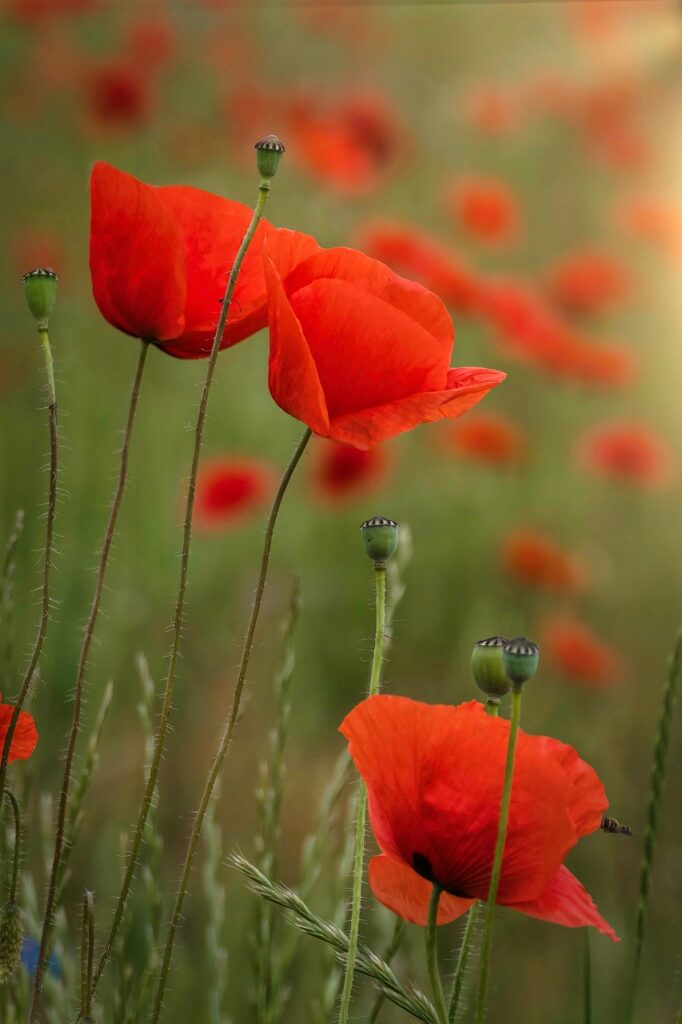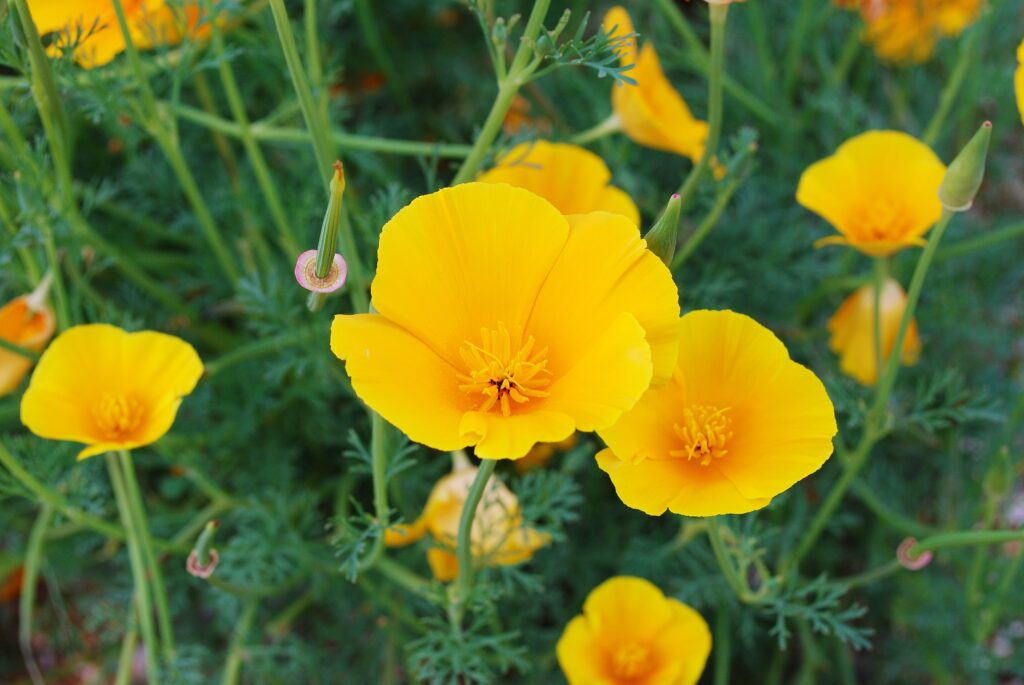Red poppies for remembrance and the garden on Memorial Day have a long history and significance. Memorial Day was first celebrated on May 30, 1868, at Arlington National Cemetery, across the Potomac River from Washington, D.C. According to the U.S. Department of Defense, “The ceremonies centered around the mourning-draped veranda of the Arlington mansion…Gen. and Mrs. Ulysses S. Grant presided over the ceremonies. After speeches, children from the Soldiers’ and Sailors’ Orphan Home and members of the GAR made their way through the cemetery, strewing flowers on both Union and Confederate graves, reciting prayers and singing hymns.”

I ran into a friend in the grocery store the other day; she mentioned the upcoming Memorial Day ceremonies and the VFW Buddy Poppy distribution and wanted to know if she could grow poppies in her Florida garden.
Poppies have become symbols of remembrance for those fallen during conflicts. In 1915, Col. John McCrae of the Canadian Army penned the poem “In Flanders Fields,” which describes blowing fields of red poppies among the battleground of the fallen. Inspired by this poem, the VFW (Veterans of Foreign Wars) adopted the red poppy as a symbol of their programs.
The VFW’s Buddy Poppy Program conducted its first poppy distribution before Memorial Day in 1922. The Buddy Poppies are assembled by disabled and needy veterans in VA Hospitals. The program compensates veterans who assemble the poppies, provides financial assistance for maintaining state and national veterans’ rehabilitation and service programs, and partially supports the VFW National Home for orphans and widows of our nation’s veterans.
The name “Buddy Poppy” was registered with the U.S. Patents Office in 1924, which issued a trademark to the VFW. The Buddy trademark on red poppies guarantees that all bearing the name and the VFW label are genuine products and the work of veterans. The distribution of Buddy Poppies by local VFW Posts and Auxiliary collects only donations, and money collected by the units stays local. The program is non-profit, and the donations are used to provide for local veterans and their families’ welfare.
Opium poppies are native to parts of Asia and the Mediterranean and struggle in warm locations. Adventurous gardeners who wish to try poppies in their Florida, tropical, or subtropical gardens should start the seeds in late fall and winter. The seedlings are frost tolerant; a little cool or cold, particularly at night, is good for these plants. Choose a spot with bright light in the morning and shade in the afternoon. Well-drained soil is necessary; mulch and regular water applications are required for good growth.

However, a better choice for warm-season gardens is the California poppy, Eschscholzia californica. Some gardeners report more success with the west coast native. Even though this poppy may be grown as an annual or perennial, expect only one year in steamy areas. Sow the seeds in the fall in well-drained soil; the preference is for sandy, sunny locations. As the seedlings grow, thin to ensure good air circulation and dead-head the spent blooms to encourage more flowers.
General John Logan, National Commander of the Grand Army of the Republic via General Order No. 11, wrote, “Let us, then, at the time appointed, gather around their sacred remains and garland the passionless mounds above them with choicest flowers of springtime; let us raise above them the dear old flag they saved; let us in this solemn presence renew our pledge to aid and to assist those whom they have left among us as a sacred charge upon the Nation’s gratitude – the soldier’s and sailor’s widow and orphan.”
Leave a Reply